
Edward Durell Stone was an American architect known for the formal, highly decorative buildings he designed in the 1950s and 1960s. His works include the Museum of Modern Art, in New York City, the United States Embassy in New Delhi, India, The Keller Center at the University of Chicago, and the John F. Kennedy Center for the Performing Arts in Washington, D.C.

Albert Kahn was an American industrial architect. He was accedited the architect of Detroit and designed industrial plant complexes such as the Ford River Rouge automobile complex. He designed the construction of Detroit skyscrapers and office buildings as well as mansions in the city suburbs. He had a organization of hundreds of architect associates for his firm and in 1937 designed some 20% percent of all architect lay-out arranged factories in the nation.

Robert Mills, a South Carolina architect known for designing both the first Washington Monument, located in Baltimore, Maryland, as well as the better known monument to the first president in the nation's capital, Washington, DC. He is sometimes said to be the first native-born American to be professionally trained as an architect. Charles Bulfinch of Boston perhaps has a clearer claim to this honor.

Alexander Jackson Davis, or A. J. Davis, was an American architect, known particularly for his association with the Gothic Revival style.

Gridley James Fox Bryant, often referred to as G. J. F. Bryant, was a Boston architect, builder, and industrial engineer whose designs "dominated the profession of architecture in [Boston] and New England." One of the most influential architects in New England, he designed custom-made houses, government buildings, churches, schoolhouses, and private residences across the United States, and was popular among the Boston elite. His most notable designs are foundational buildings on numerous campuses across the northeastern United States, including Tufts College, Bates College, and Harvard College. He has been credited as one of the first modern architects in America, and at the height of his career he was the most commissioned architect in New England. He is also the most commissioned architect in Boston history.
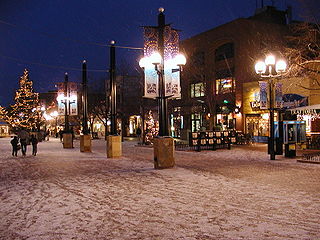
Hideo Sasaki was a Japanese American landscape architect.

George Franklin Barber was an American architect known for the house designs he marketed worldwide through mail-order catalogs. Barber was one of the most successful residential architects of the late Victorian period in the United States, and his plans were used for houses in all 50 U.S. states, and in nations as far away as Japan and the Philippines. Over four dozen Barber houses are individually listed on the National Register of Historic Places, and several dozen more are listed as part of historic districts.
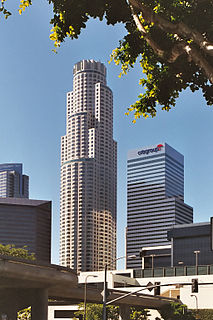
Pei Cobb Freed & Partners is an American architectural firm based in New York City, founded in 1955 by I. M. Pei and other associates. The firm has received numerous awards for its work.

McKim, Mead & White was an American architectural firm that came to define architectural practice, urbanism, and the ideals of the American Renaissance in fin de siècle New York. The firm's founding partners Charles Follen McKim (1847–1909), William Rutherford Mead (1846–1928) and Stanford White (1853–1906) were giants in the architecture of their time, and remain important as innovators and leaders in the development of modern architecture worldwide. They formed a school of classically trained, technologically skilled designers who practiced well into the mid-twentieth century. According to Robert A. M. Stern, only Frank Lloyd Wright was more important to the identity and character of modern American architecture.

Fentress Architects is an international design firm known for large-scale public architecture such as airports, museums, university buildings, convention centers, laboratories, and high-rise office towers. Some of the buildings for which the firm is best known include Denver International Airport (1995), the modernized Tom Bradley International Terminal at LAX (2013), the National Museum of the Marine Corps near Quantico, Virginia (2005), and the Green Square Complex in Raleigh, North Carolina (2012).
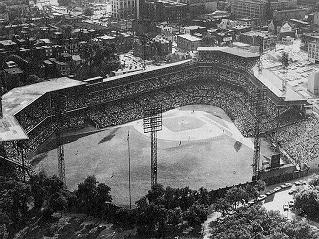
Charles Wellford Leavitt (1871–1928) was an American landscape architect, urban planner, and civil engineer who designed everything from elaborate gardens on Long Island, New York and New Jersey estates to federal parks in Cuba, hotels in Puerto Rico, plans of towns in Florida, New York and elsewhere. New York publisher Julius David Stern called Leavitt "a rare combination of engineer, artist, and diplomat", and the multi-faceted career chosen by Leavitt, veering between public and private commissions and embracing everything from hard-edged engineering to sensuous garden design, and calling for negotiations with everyone from wealthy entrepreneurs to county commissioners, called for an individual with singular talents. Leavitt was one of the preeminent landscape architects of his era and helped found the study of landscape architecture at New York City's Columbia University, where he was one of the first three professors in the University's new four-year program in the discipline.
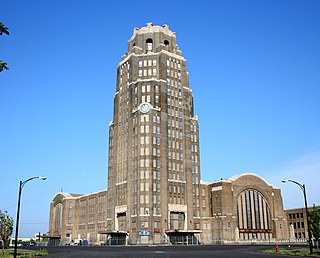
Alfred T. Fellheimer was an American architect. He began his career with Reed & Stem, where he was lead architect for Grand Central Terminal. Beginning in 1928, his firm Fellheimer & Wagner designed Cincinnati Union Terminal.

ZGF Architects LLP (ZGF), formerly Zimmer Gunsul Frasca Partnership, is an American architectural firm with offices in Portland, Oregon; Seattle, Washington; Los Angeles, California; Washington D.C.; New York, New York; and Vancouver, Canada. Founded in 1942, the firm was listed in 2011 as the #4 architectural firm in the United States by Building Design+Construction, and ranked the #9 architectural firm by Architect. In 2016 Architect named ZGF the #1 architecture firm in the country, citing the organization's dedication to sustainability as a major deciding factor. Between the company's five offices in the United States and their office in Canada they employ more than 600 employees.
Charles Coker Wilson was an American architect based in Columbia, South Carolina. Wilson was born in Hartsville, South Carolina, and graduated from South Carolina College with an engineering degree in 1886, continuing on to receive his master's degree in 1888. He briefly studied architecture in the Atelier Duray at the École des Beaux-Arts in Paris. Much of his work contained Beaux-Arts elements. Architects who worked for Wilson include Joseph F. Leitner, during 1901–1905, who became a noted architect in Wilmington, North Carolina; and Henry Ten Eyck Wendell, during 1905–1906.

The Palmetto Building, built during 1912–1913, is an early skyscraper in Columbia, South Carolina. It was designed by architect Julius Harder, and Wilson and Sompayrac served as supervising architects. Upon completion it was the tallest building in South Carolina.

John Henry Devereux, also called John Delorey before 1860, was an American architect and builder best known for his designs in Charleston, South Carolina. According to the National Park Service, he was the "most prolific architect of the post-Civil War era" in the Charleston area. His works are listed on the U.S. National Register of Historic Places. His Charleston Post Office and Courthouse has been designated as a U.S. National Historic Landmark.
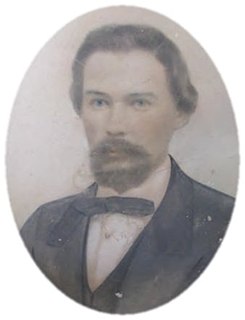
Christopher W. Werner (1805–1875) was a nineteenth-century wrought iron manufacturer, artisan, and entrepreneur based in Charleston, South Carolina, US. He was one of three noted German-American ironworkers in Charleston, who created most of its high-quality wrought iron. He had immigrated from Prussia in his late 20s, already an accomplished businessman. In Charleston he married a young woman from England, another immigrant, and they had a family.

Thomas Phifer is an American architect based in New York City.
Mario Gooden is an architect in the United States. He is the principal at Huff + Gooden Architects which he co-founded with Ray Huff in 1997. Gooden is also a Professor of Practice at the Graduate School of Architecture, Planning and Preservation (GSAPP) of Columbia University, where he teaches architectural design and theory. Gooden held previous academic appointments at the Yale School of Architecture as the Louis I. Khan Distinguished Visiting Professor, the Southern California Institute of Architecture (Sci-Arc) in Los Angeles, the University of Arizona (Tucson), the University of Florida (Gainesville), Clemson University, and The City College of New York.

Lyles, Bissett, Carlisle, and Wolff (LBC&W), an architecture firm based in Columbia, South Carolina, was the region's most prominent firm from 1948 until 1975. While the roots of the firm stretch back to 1938, LBC&W was officially incorporated in 1948 as William G. Lyles, Thomas J. Bissett, William A. Carlisle, and Louis M. Wolff. LBC&W's streamlined operational structure, atypically high employment numbers, and varied portfolio contributed to the success of the firm. The firm had satellite offices in Richmond, Virginia; Washington, D.C.; Spartanburg, South Carolina; Raleigh, North Carolina; and Rockville, Maryland. At its height, over 350 architects, engineers, and other staff members were employed by LBC&W. The firm completed over 7,000 projects in its 30-year span, many of which were on the cutting edge of Modern architecture. From Clemson University's library that reflects the influence of Edward Durell Stone's Embassy at New Delhi to the Bankers Trust Tower in downtown Columbia that mimics the Seagram Building by Mies van der Rohe, LBC&W incorporated the methodologies and designs of the great architects of the twentieth century. LBC&W designed some of South Carolina's – and certainly Columbia's – most prominent commercial and private buildings, creating the modern built environment of Columbia today.


















